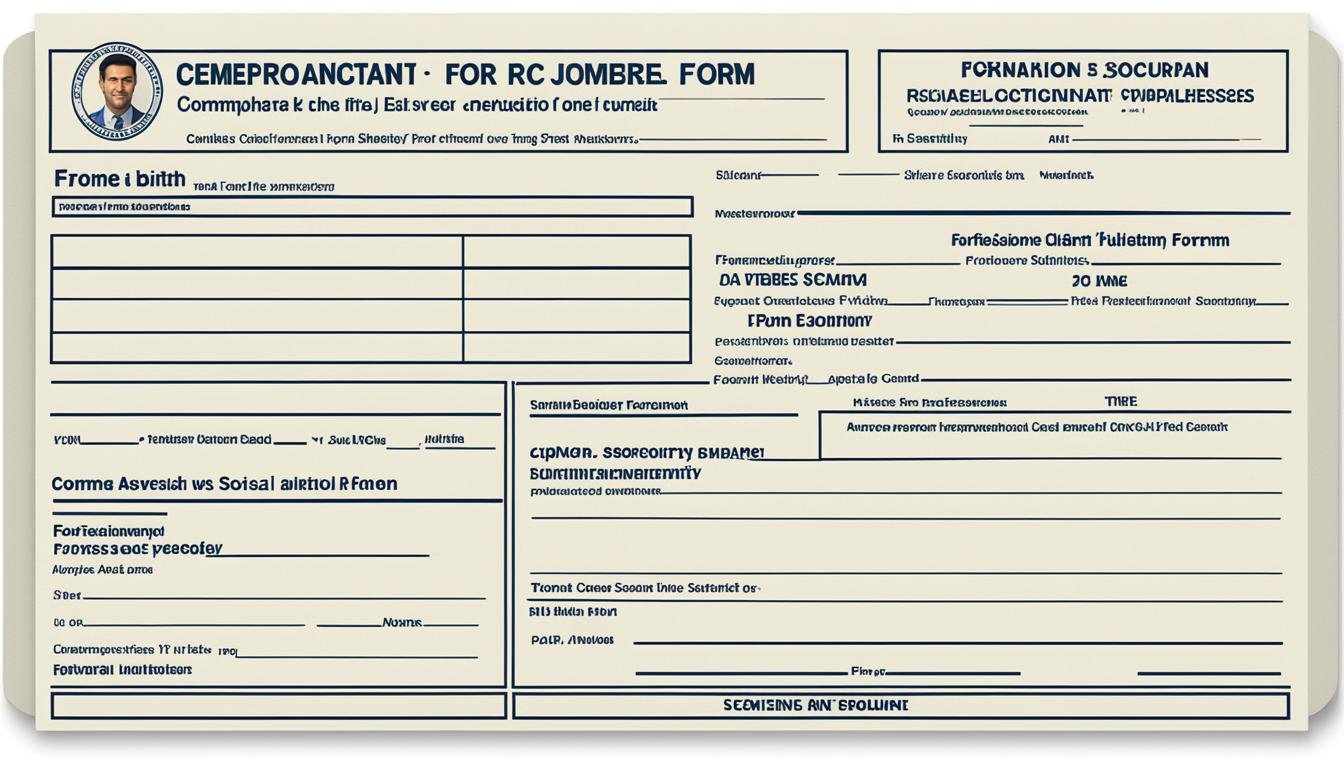When starting a new job, you need to provide your employer with two forms of identification to show your identity and authorization to work in the United States. These identification documents play a crucial role in the employment verification process and help ensure that all employees are legally eligible to work.
Employers are required to verify the identity and employment authorization of every employee they hire to maintain a legal and secure workforce. The Department of Homeland Security has established three lists of acceptable documents for this purpose: List A, List B, and List C.
List A documents establish both identity and employment authorization. Examples of List A documents include a U.S. Passport or U.S. Passport Card, Form I-551 (Permanent Resident Card or Green Card), and Form I-766 (Employment Authorization Document Card).
List B documents establish identity and must be presented along with a List C document for employment authorization. Examples of List B documents include a driver’s license, ID card issued by government agencies, school ID card with a photograph, and voter registration card.
List C documents solely establish employment authorization and must be presented with a List B document for identity verification. Examples of List C documents include a U.S. Social Security account number card, Form FS-240 (Consular Report of Birth Abroad), and employment authorization document issued by the Department of Homeland Security.
It is essential to ensure that the names on the identification documents match. If there is a name change, linking documents such as marriage licenses or court records can be presented as proof. Additionally, some identification documents may have expiration dates, and employers may need to reverify employees’ authorization to work when certain documents expire.
Understanding the different lists of acceptable documents and following the guidelines provided by the Department of Homeland Security is crucial for employers to comply with employment verification regulations. By adhering to these requirements, employers can maintain a legal and secure workforce.
Key Takeaways:
- Employees need to provide two forms of identification for employment verification.
- There are three lists of acceptable documents: List A, List B, and List C.
- List A documents establish both identity and employment authorization.
- List B documents establish identity and must be presented with a List C document for employment authorization.
- List C documents solely establish employment authorization and must be presented with a List B document for identity verification.
List A Documents
List A documents are forms of identification for employment that demonstrate both the employee’s identity and authorization to work in the United States. These documents provide employers with comprehensive proof, ensuring compliance with legal requirements. Some List A documents combine multiple forms of identification into a single document, simplifying the verification process.
Here are a few examples of List A documents:
- A U.S. Passport or U.S. Passport Card
- Form I-551 (Permanent Resident Card or Green Card)
- Form I-766 (Employment Authorization Document Card)
| Document | Description |
|---|---|
| U.S. Passport or U.S. Passport Card | An official travel document issued by the U.S. government, providing proof of citizenship and identity. |
| Form I-551 (Permanent Resident Card or Green Card) | A card issued to lawful permanent residents of the United States, proving their authorization to live and work in the country. |
| Form I-766 (Employment Authorization Document Card) | An employment authorization document issued by the Department of Homeland Security (DHS) that allows individuals to legally work in the United States. |
These documents are just a few examples of List A documents. It’s essential for employers to review the complete list provided by the Department of Homeland Security to ensure they are accepting valid forms of identification for employment.
Having a clear understanding of List A documents helps employers establish a workforce that is legally authorized to work in the United States while maintaining compliance with employment verification regulations.
List B Documents
List B documents are essential for establishing identity and are required along with a List C document for employment authorization. These documents provide valuable proof of identification and play a crucial role in the hiring process. Here are some examples of List B documents:
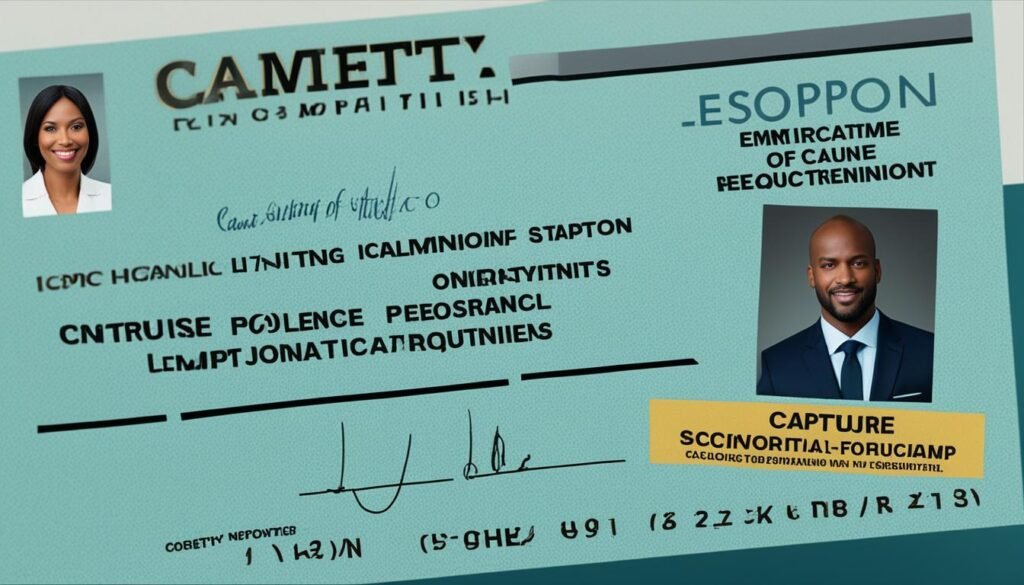
Driver’s License: A valid driver’s license issued by the state is a commonly used List B document. It not only serves as a form of identification but also verifies the individual’s driving privileges.
ID Card Issued by Government Agencies: Government-issued identification cards, such as state identification cards, military identification cards, or tribal identification cards, are acceptable forms of identification for employment purposes.
School ID Card with a Photograph: Many educational institutions issue identification cards to students. These cards typically contain a photograph of the student, making them useful for establishing their identity.
Voter Registration Card: A voter registration card is another acceptable List B document. It not only confirms an individual’s identity but also demonstrates their active participation in civic duties.
Employers should ensure that employees provide valid List B documents to establish their identity accurately. Remember, these documents must be accompanied by a List C document to verify employment authorization. By following these guidelines, employers can fulfill job identification requirements and maintain a legal and trustworthy workforce.
| List B Documents | Description |
|---|---|
| Driver’s License | A valid driver’s license issued by the state |
| ID Card Issued by Government Agencies | Government-issued identification cards, such as state identification cards, military identification cards, or tribal identification cards |
| School ID Card with a Photograph | Identification cards issued by educational institutions with a photograph of the individual |
| Voter Registration Card | A card that verifies an individual’s voter registration and identity |
List C Documents
List C documents are essential for job identification verification and establish employment authorization. They must be presented along with a List B document for identity verification. Examples of List C documents include:
- A U.S. Social Security account number card
- Form FS-240 (Consular Report of Birth Abroad)
- Employment authorization document issued by the Department of Homeland Security
These documents solely establish the individual’s eligibility to work in the United States. They are important for employers to verify during the hiring process to ensure compliance with federal regulations.
“List C documents provide the necessary evidence of work authorization, and employers must carefully review them to confirm an individual’s eligibility for employment.”
Verifying List C documents is crucial, as it confirms that the individual has a legal right to work in the United States. Employers should review these documents in conjunction with List B documents to complete the job identification process.
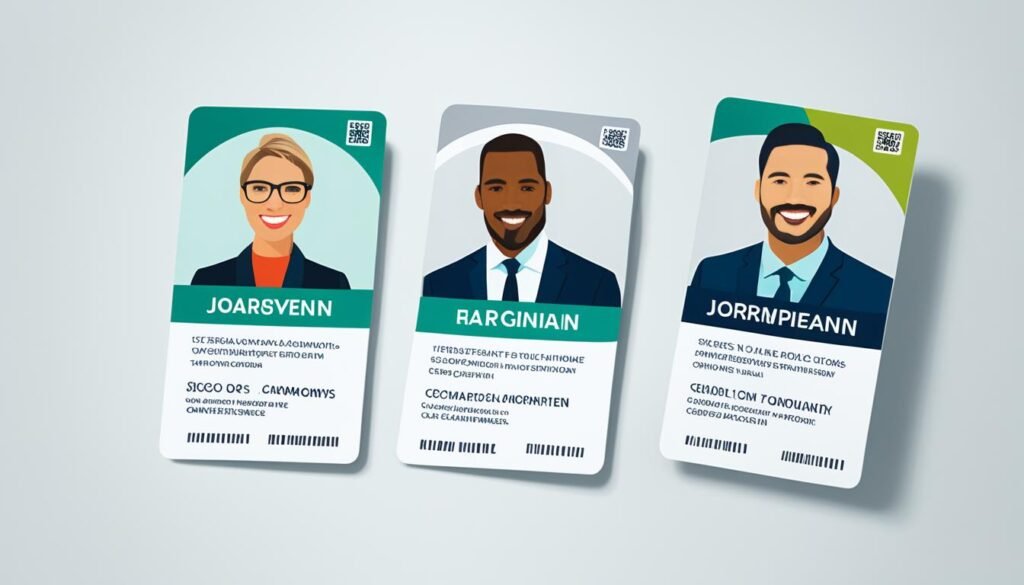
Special Cases for Minors and Individuals with Disabilities
While most individuals are required to provide specific forms of identification for employment verification, there are special cases for minors under 18 and individuals with disabilities who may face challenges in providing the listed identity documents. In such situations, alternative documents can be presented as proof of identity and employment authorization.
For minors under 18, acceptable documents may include:
- School records
- Clinic or hospital records
- Daycare or nursery school records
These alternative documents serve as suitable substitutes for the usual identification requirements and cater to the unique circumstances of minors.
Similarly, individuals with disabilities who are unable to provide the standard identity documentation can also utilize alternative documents. These may include:
- School records
- Clinic or hospital records
- Daycare or nursery school records
Providing these alternative documents allows individuals with disabilities to participate in the job identification process effectively and ensures equal opportunities for employment.
In cases where alternative documents are used for minors or individuals with disabilities, it is essential to make special notations to indicate the special circumstances and the documents presented. This helps employers differentiate these cases from the standard identification processes and ensures compliance with regulations.
Acceptable Receipts
In certain cases, employees may provide receipts for replacement or lost identification documents as temporary proof of identity and employment authorization. This allows them to continue working while awaiting the arrival of the replacement document. Employers must be familiar with the acceptable receipt validity dates and the specific requirements for each List category.
Acceptable receipts may include:
- Form I-797 Notice of Action: This form is issued by the U.S. Citizenship and Immigration Services (USCIS) and serves as a receipt for various immigration applications. It can be used as a temporary proof of employment authorization.
- Temporary I-551 Stamp: This stamp, placed on a foreign passport or I-94 Arrival/Departure Record, is a temporary proof of lawful permanent resident status and employment authorization.
- Form I-94 Arrival/Departure Record: This record provides evidence of an individual’s lawful admission to the U.S. and can be used as a temporary proof of employment authorization.
| List Category | Acceptable Receipts |
|---|---|
| List A |
|
| List B |
|
| List C |
|
It is important to note that these receipts have specific validity periods, beyond which employees must present the actual documents. Employers should refer to the guidelines provided by the Department of Homeland Security to ensure compliance with job identification verification requirements.

Why Name Matching Is Important:
“When it comes to job identification requirements, matching names on identification documents is vital. It establishes consistency, enhances security, and minimizes the risk of fraudulent activity.”
Expiration Dates and Reverification
Some identification documents may have expiration dates. It is important for employers to be aware of these expiration dates and understand their responsibilities regarding reverification. When certain List A or List C documents expire, employers must reverify their employees’ authorization to work to ensure continued compliance with employment regulations.
Reverification is a process through which employers confirm that an employee’s work authorization is still valid after the expiration of their identification documents. This helps maintain a legal and secure workforce.
However, it’s crucial for employers to approach reverification without discrimination. The reverification process should apply uniformly to all employees and not target individuals based on document expiration dates. Discriminating against employees based on their documents’ expiration dates can lead to legal consequences and harm the reputation of the company.
Employers must stay informed about when and how to reverify employees’ work authorization and follow the guidelines provided by the Department of Homeland Security. By adhering to these regulations, employers can ensure that their workforce remains compliant and properly documented.
Reverification process:
- Identify the employees whose documents are approaching their expiration dates.
- Notify employees in advance about the impending reverification process and the required documentation.
- Request the necessary identification documents from employees.
- Follow the same procedures for verification as during the initial hire, ensuring that the documents are genuine and belong to the employee.
- Update the employee’s records with the new document information and expiration dates.
It is essential for employers to keep track of expiring documents and act promptly to avoid employing individuals without proper work authorization. Failure to comply with employment verification requirements can result in penalties and legal consequences.
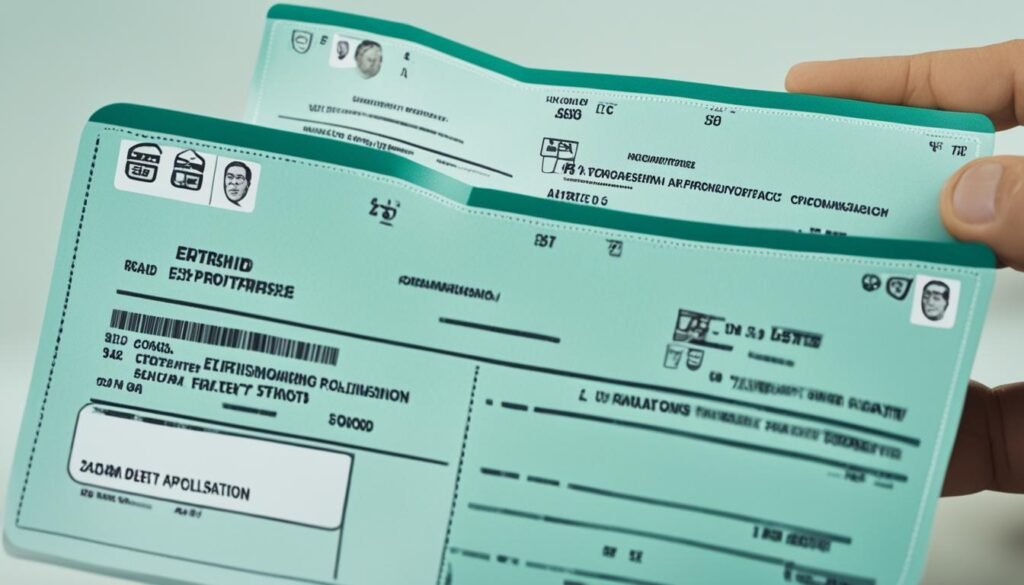
Unacceptable Forms of Identification
When verifying employee identification, it is important for employers to be aware of the limitations and understand which forms of identification are not acceptable. The following forms of identification should not be used for job identification requirements:
- Student ID cards: Student identification cards issued by educational institutions are not considered valid forms of identification for employment purposes. While they may serve as proof of enrollment, they do not meet the requirements for establishing identity and employment authorization.
- Company ID cards: While company ID cards are commonly used for access control within the workplace, they are not acceptable as primary forms of identification for employment verification. They may indicate affiliation with a specific organization but do not provide sufficient information to establish an individual’s identity and authorization to work.
- Temporary PIV cards: Temporary Personal Identity Verification (PIV) cards issued for short-term access or during the enrollment process for a permanent PIV card should not be accepted as valid forms of identification. These temporary cards typically have limited validity and may not meet the established requirements for employment verification.
Employers should familiarize themselves with the acceptable forms of identification to ensure compliance with job identification requirements. By understanding which documents are unacceptable, employers can prevent potential issues and maintain a legally compliant workforce.
For a comprehensive reference, here is a summarized table outlining the acceptable and unacceptable forms of identification:
| Acceptable Forms of Identification | Unacceptable Forms of Identification |
|---|---|
| U.S. Passport | Student ID cards |
| Permanent Resident Card (Green Card) | Company ID cards |
| Employment Authorization Document Card | Temporary PIV cards |
| Driver’s License | |
| Social Security Account Number Card |
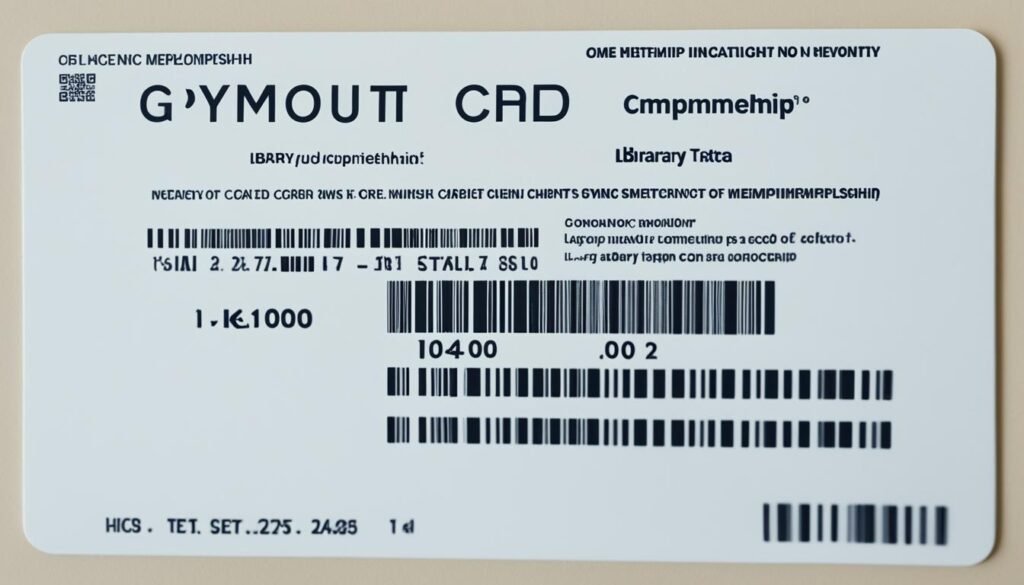
Examples of Acceptable Primary and Secondary Forms of Identification
When it comes to job identification, there are primary and secondary forms that employers accept. Primary forms of identification establish both identity and employment authorization, while secondary forms establish employment authorization only. It is essential to ensure that at least one primary form of identification is presented by the employee.
Examples of Primary Forms of Identification
- U.S. passports
- Permanent resident cards
- State-issued driver’s licenses
Examples of Secondary Forms of Identification
- U.S. Social Security cards
- Birth certificates
- Voter registration cards
Employers should thoroughly examine these identification documents to ensure their authenticity and validity. By focusing on these acceptable forms of identification, employers can confidently verify their employees’ eligibility to work.
Remember, proper job identification forms are crucial for compliance with employment regulations.
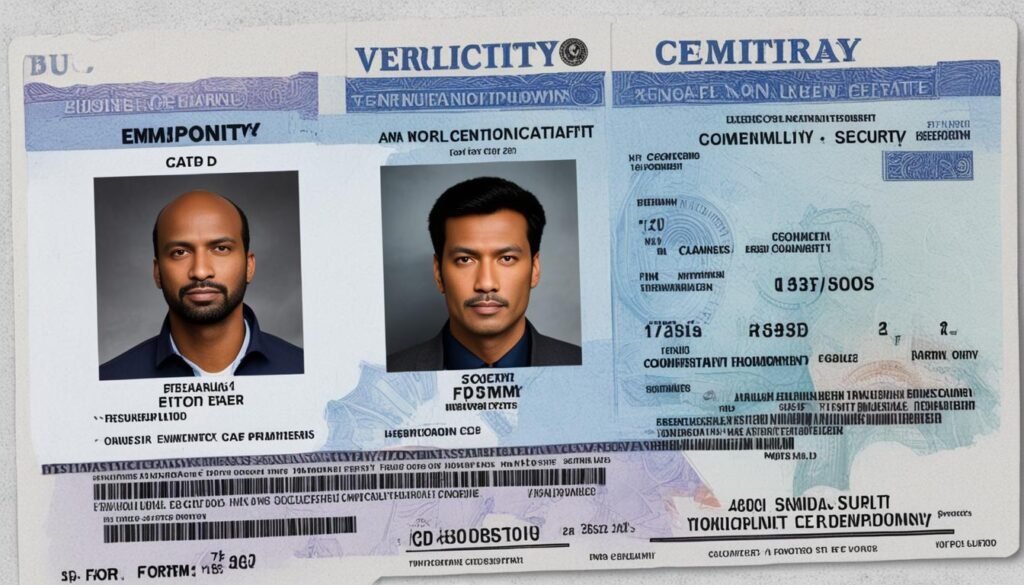
Linking Documents for Name Changes
In cases where there is a name change, linking documents such as marriage licenses or court records can be presented as proof of the name change. Employers should verify the authenticity of these documents. These linking documents play a crucial role in ensuring accurate identification for job purposes.
If an employee has gone through a name change due to marriage or legal action, it is important to provide the necessary documentation to update their identification records. This helps maintain consistency and avoids any confusion when verifying job identification.
Marriage licenses are commonly used as linking documents and provide evidence of a name change following the union. This legal document certifies the marriage and serves as proof that the employee has changed their name. Employers should ensure that the marriage license is valid and from a recognized authority.
Court records are another acceptable form of documentation to establish a name change. These records typically include a court order or decree that verifies the employee’s legal name change. Employers should review the court records to confirm their validity and accuracy.
By accepting these linking documents and diligently verifying their authenticity, employers can ensure that the employee’s job identification is accurate and up to date. This process helps maintain the integrity of employment records and provides a solid foundation for effective workforce management.
Example:
Your employee, Jane Roberts, recently got married and has decided to change her last name to Smith. To update her job identification, Jane provides you with a valid marriage license issued by the county clerk’s office. By reviewing the document and confirming its authenticity, you can proceed with updating Jane’s records and ensure that her job identification reflects her new legal name.
| Acceptable Linking Documents for Name Changes |
|---|
| Marriage license |
| Court records (court order or decree) |
Conclusion
Ensuring job identification requirements are met and verifying employee identification is essential for maintaining a legal and secure workforce. Employers must familiarize themselves with the different lists of acceptable documents and follow the guidelines provided by the Department of Homeland Security.
By adhering to these regulations, employers can verify the authenticity of their employees’ forms of identification and establish their eligibility for employment. This not only protects the employer from potential legal issues but also creates a safe and trustworthy work environment.
Job identification verification helps employers mitigate the risk of hiring unauthorized individuals and ensures compliance with federal laws. It also serves as a means to prevent identity theft and fraudulent activities within the workplace.
FAQ
What are the two forms of identification required for employment?
Employees must provide two forms of identification for employment verification.
What are List A documents?
List A documents show both identity and employment authorization and can include a U.S. Passport or U.S. Passport Card, Form I-551 (Permanent Resident Card or Green Card), and Form I-766 (Employment Authorization Document Card).
What are List B documents?
List B documents establish identity and must be presented along with a List C document for employment authorization. Examples include a driver’s license, ID card issued by government agencies, school ID card with a photograph, and voter registration card.
What are List C documents?
List C documents solely establish employment authorization and must be presented with a List B document for identity verification. Examples include a U.S. Social Security account number card, Form FS-240 (Consular Report of Birth Abroad), and employment authorization document issued by the Department of Homeland Security.
What identification documents can minors and individuals with disabilities present?
Minors under 18 and individuals with disabilities who cannot provide the listed identity documents may present alternative documents such as school records, clinic or hospital records, or daycare or nursery school records.
Can employees provide receipts as temporary proof of identification?
In certain cases, employees may provide receipts for replacement or lost identification documents as temporary proof of identity and employment authorization. Employers should be familiar with acceptable receipt validity dates and specific requirements for each List category.
What should be done if the names on the identification documents do not match?
If the names on the identification documents do not match, employees may need to provide linking documentation, such as a marriage license or court order, to show the name change. It is essential to ensure the accuracy of names on identification documents.
Do identification documents have expiration dates?
Some identification documents may have expiration dates. Employers may need to reverify employees’ authorization to work when certain List A or List C documents expire. It is important not to discriminate based on document expiration dates.
What forms of identification are not acceptable?
Certain forms of identification, such as student ID cards, company ID cards, and temporary PIV cards, are not acceptable. Employers should be aware of these limitations when verifying employee identification.
What are examples of primary and secondary forms of identification?
Primary forms of identification include U.S. passports, permanent resident cards, and state-issued driver’s licenses. Secondary forms include U.S. Social Security cards, birth certificates, and voter registration cards. Employers should ensure that at least one primary form of identification is presented.
What documents can be presented for name changes?
In cases where there is a name change, linking documents such as marriage licenses or court records can be presented as proof of the name change. Employers should verify the authenticity of these documents.
What is the importance of proper forms of identification for employment verification?
Ensuring that employees provide proper forms of identification is crucial for employment verification. Employers should familiarize themselves with the different lists of acceptable documents and follow the guidelines provided by the Department of Homeland Security to maintain a legal and secure workforce.
Source Links
- https://www.uscis.gov/i-9-central/form-i-9-acceptable-documents
- https://www.uscis.gov/i-9-central/form-i-9-resources/handbook-for-employers-m-274/130-acceptable-documents-for-verifying-employment-authorization-and-identity
- https://www.gsa.gov/technology/it-contract-vehicles-and-purchasing-programs/federal-credentialing-services/get-appointment-help/bring-required-documents
